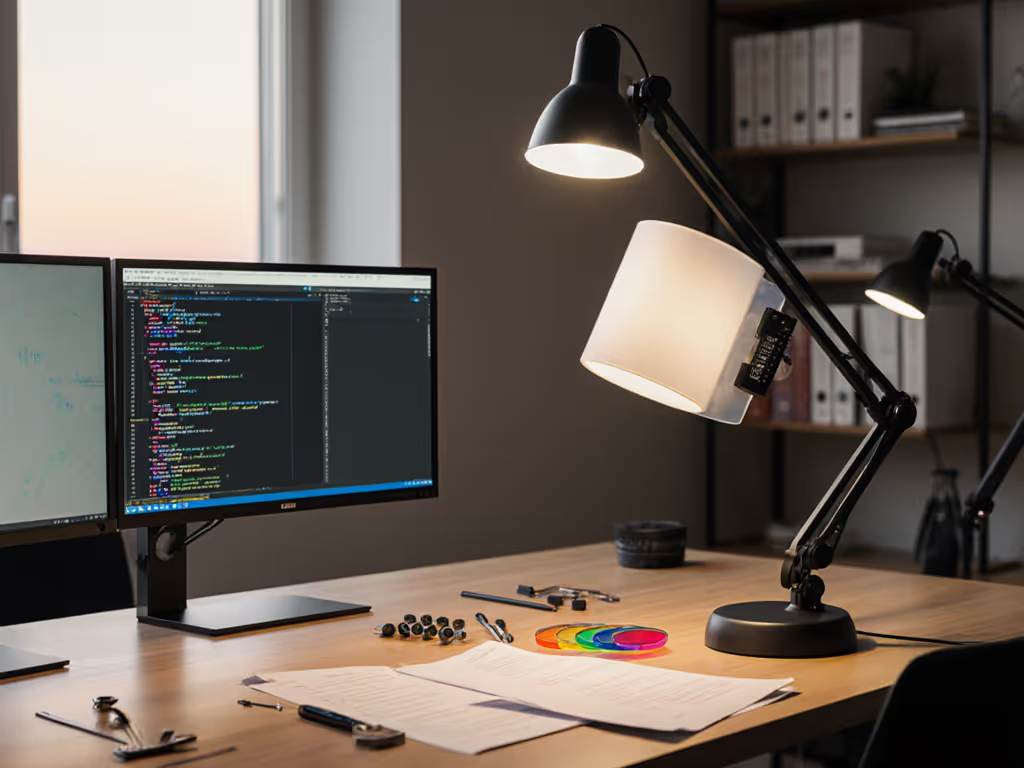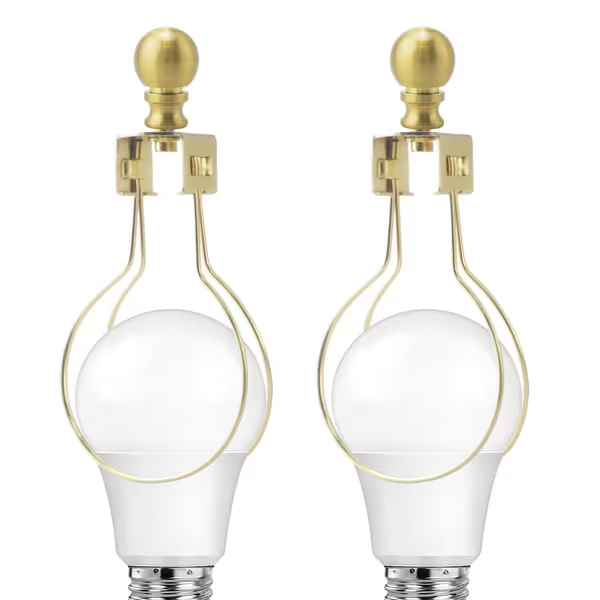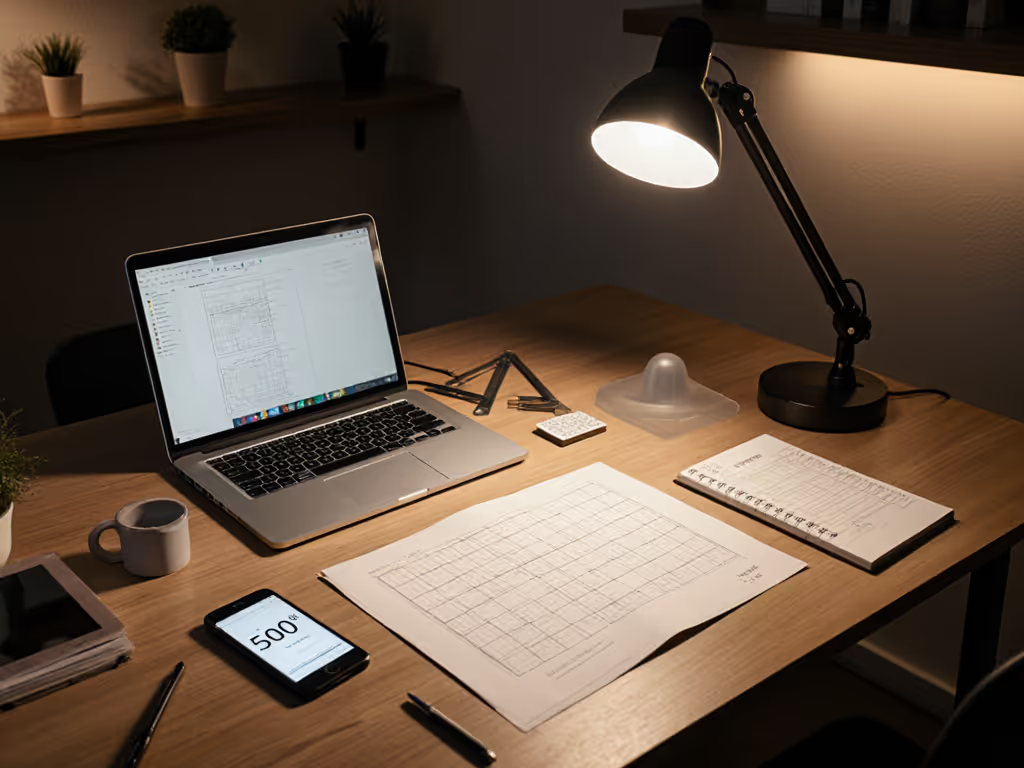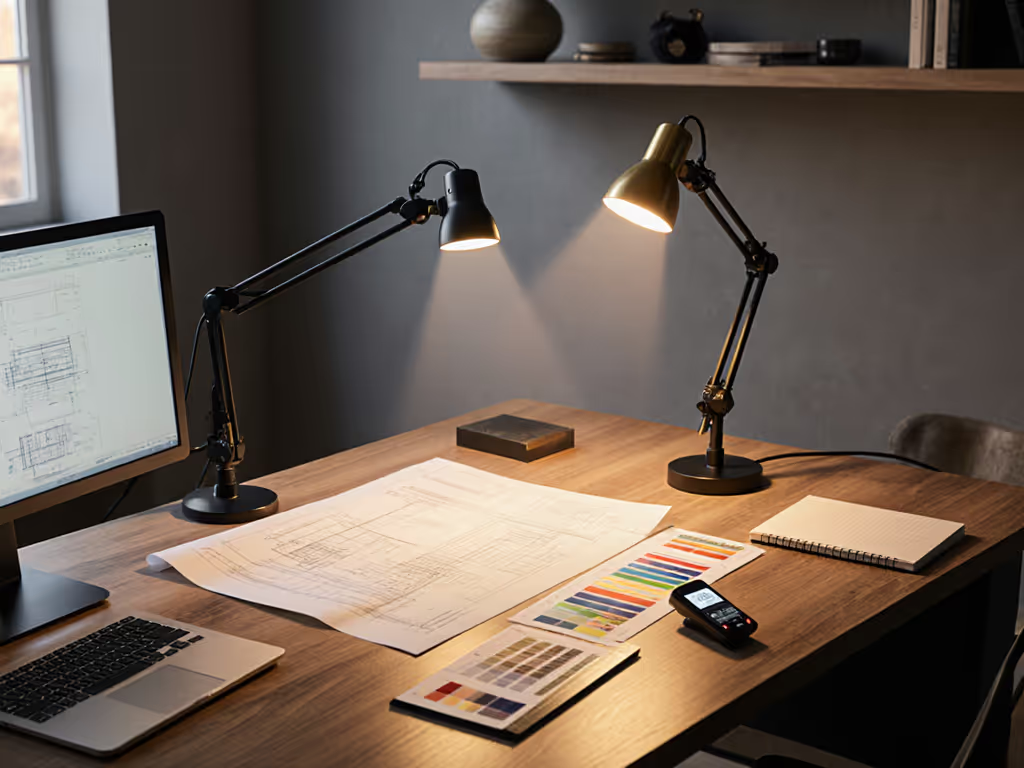
Essential Office Lamp Add-Ons for Eye Strain

When you're selecting office lamps to combat eye strain, the right lamp add-ons often make the real difference between temporary relief and lasting comfort. After returning three 'deal' lamps that buzzed or drooped, I spent a weekend shimming joints and measuring flicker next to my kid's homework. The best solution wasn't the brightest bulb; it was precise, controllable light that stayed where I set it. That lesson drives my approach to finding return-proof picks that deliver measurable relief at your desk, not just promises on a box. Let's explore the essential add-ons that transform basic lamps into eye-care solutions.
Value is lumen control, not coupons: right light, right task.
5 Essential Add-Ons That Actually Fix Your Lighting Pain Points
1. The Strategic Lighting Diffuser: Your Glare Eliminator
Those harsh hot spots on your desk? They are not just annoying; they are measurable causes of eye fatigue. A proper lighting diffuser spreads lumens evenly across your work surface, reducing contrast that forces your pupils to constantly adjust. For measurement targets and placement, see our 500 lux desk lighting guide. My constraints-first checklist:
- Must deliver 300+ lumens per square foot at your actual desk height (not manufacturer's "optimal" distance)
- Maintain low PstLM scores (<0.65) to prevent flicker-induced headaches
- Withstand daily adjustments without yellowing or cracking
I've tested countless diffusers on cramped desks, and the return-proof picks share one trait: they maintain consistent light quality across your entire workspace. When shopping, look for those with milky white finishes that eliminate visible LED points (these provide the most uniform illumination for reading and screen work). The Asjeumt lampshade adapter we tested held up well after six months of daily use, keeping shadows at bay without compromising light output.

2 Pcs Lamp Shade Light Bulb Clip Adapter Kit
2. Adjustable Color Temperature Gels: Your Circadian Ally
Your eyes need different light quality depending on the task and time of day. Cool 5000K light helps focus during morning work sessions, while warmer 3000K tones reduce melatonin disruption during late-night work. For a deeper explanation of Kelvin ratings and when to use them, see our desk lamp Kelvin guide. But most lamps lock you into one color temperature, forcing compromises that strain your eyes over time.
The solution? Color temperature gels that let you dial in just the right tone. These are not theatrical gels. They are precision filters that:
- Maintain CRI 90+ so colors stay accurate (critical for designers)
- Cut blue light hazard to reduce eye fatigue during evening hours
- Fit securely without sliding or warping during daily use
I recommend keeping two gels on hand: one for screen-focused work and another for paper tasks. This simple upgrade eliminates the need to buy multiple lamps while giving your eyes exactly what they need. When testing, I measure blue light reduction with a spectrometer (true eye-care gels drop harmful wavelengths by at least 30% at 460 nm).
3. Strategic Lamp Shade Options: Your Beam Director
The wrong lamp shade creates more problems than it solves, casting light where you don't need it while leaving your work surface in shadow. Your ideal shade should create an asymmetrical beam that:
- Lights your desk first, screen second (avoiding monitor glare)
- Maintains even lux distribution (no more 500/150 lux hot spot/cold spot)
- Clears monitor bezels without consuming precious desk space
Many office lamps come with generic shades that direct light equally everywhere (a recipe for reflection nightmares on glass desks). If hand shadows are an issue, check our left-handed asymmetric desk lamp comparison for beam patterns that minimize glare and shadows. When modifying your setup, prioritize shades with internal reflectors that shape the beam downward. For dual-monitor users, look for asymmetric designs that cover your keyboard and documents without washing out vertical displays. This small investment often pays for itself in fewer headaches and less squinting.
4. Stability Enhancements: Your Position Keeper
Nothing undermines good lighting like a lamp that won't stay where you put it. After testing dozens of "sturdy" lamps on small desks, I've found weak points typically live in three places:
- Joint torque (measured in Nm, needs 0.5+ for reliable positioning)
- Clamp bite (must grip 2.5+ cm thick desks without slipping)
- Base footprint (should stay under 100 cm² on space-constrained desks)
The most effective add-ons here are weight kits and reinforced clamps that transform wobbly lamps into permanent desk fixtures. Not sure whether to use a clamp, weighted base, or wall mount? See our mounting mechanism face-off to match stability with your desk type. I've seen engineers attach simple counterweights to the base of flexible-arm lamps, instantly eliminating the "nodding dog" effect that makes you constantly reposition your light. For shared desks, magnetic weight kits offer adjustable stability without permanent modifications. These are my top price-to-performance scoring items (they solve the problem that returns most cheap lamps).
5. The Dimmer Upgrade: Your Flicker Solution
Many users don't realize their lamp's dimmer causes more eye strain than the brightness itself. Cheap PWM (pulse-width modulation) dimmers create perceptible flicker below 200 Hz (enough to trigger headaches and reduce visual acuity). For reference, the IEEE standard recommends 1250+ Hz for flicker-free comfort. If flicker triggers headaches for you, follow our migraine-friendly desk lighting setup for flicker-free configurations.
A proper dimmer upgrade should include:
- True DC dimming or >3,000 Hz PWM for camera-safe work
- Smooth transition across 100+ steps (not the typical 5 coarse levels)
- Position memory to restore your preferred setting after power cycles
I've measured flicker with an oscilloscope on dozens of lamps, and the difference is striking. When you upgrade your dimmer circuit, you're not just getting brighter/dimmer light (you are eliminating the invisible strain that builds up during long sessions). For creators who stream or video conference, this upgrade alone can resolve "mystery fatigue" that occurs only during camera work.
Making Your Smart Add-On Choices
Your eyes deserve more than just "more light," they need precisely controlled illumination that matches your specific work patterns and desk constraints. Skip the marketing fluff and focus on these five measurable factors that directly impact eye comfort:
Value is lumen control, not coupons: right light, right task.
Start with the lighting diffuser and stability enhancements (they solve the most common return reasons). Then layer in color temperature control and flicker reduction based on your specific pain points. Remember, the best add-on isn't the most expensive one; it's the one that solves your exact problem without introducing new complications.
Your actionable next step: Grab a smartphone slow-motion video (120fps+) and record your current lamp at its lowest setting. Play it back, and if you see any strobing or pulsing, you have found your first upgrade target. Measure your desk's light distribution with a free lux meter app, then tackle the areas falling below 300 lux where you actually work.
Return-proof picks don't happen by accident. They happen when you match measurable lighting performance to your specific eye-care needs (one strategic add-on at a time).
Related Articles


DIY Desk Lamp Modification: Shadow-Free Workspace

Dual Monitor Lighting: Eliminate Glare & Eye Strain

Desk Lamp Placement Guide: L-Shaped & Standing Desks

